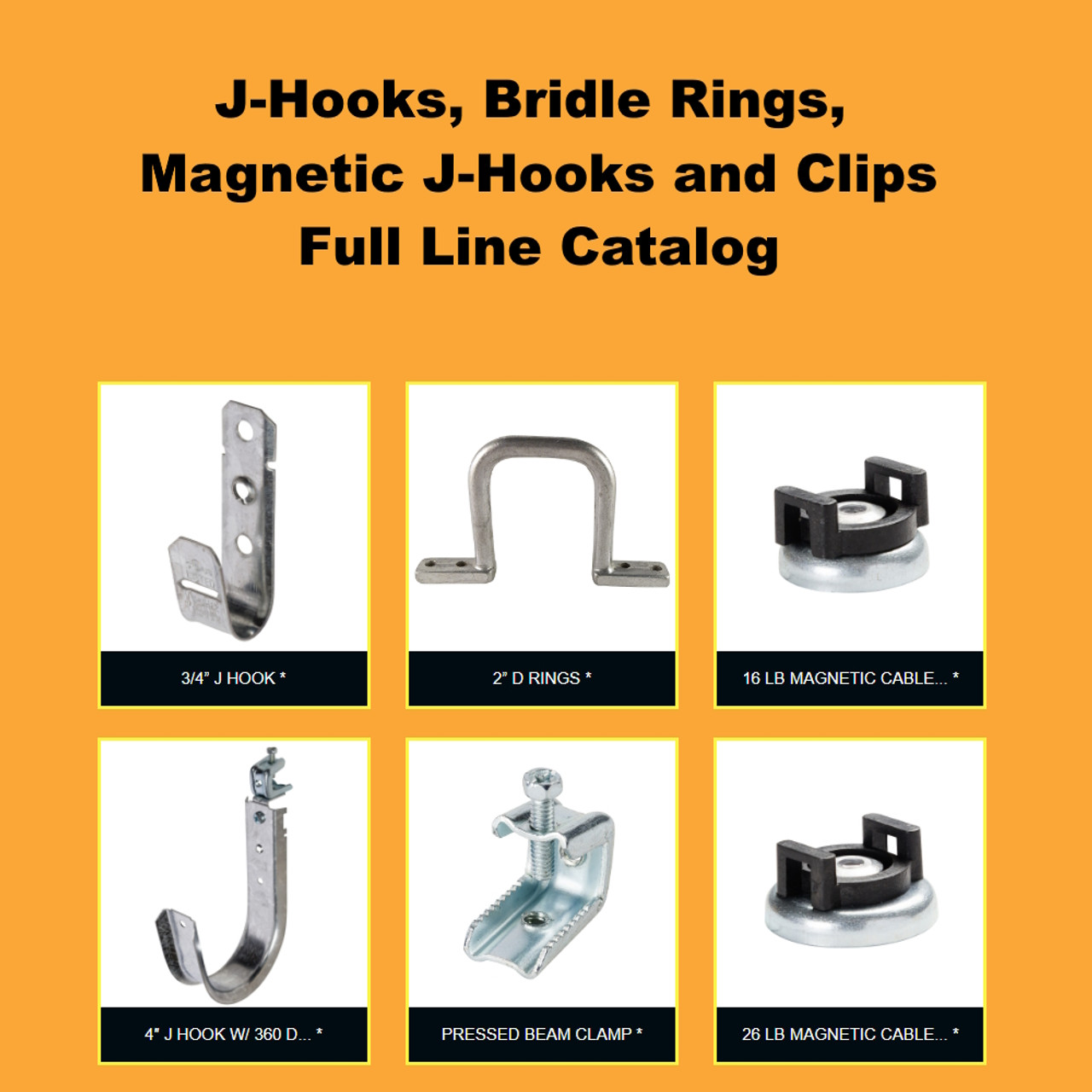Differences Between J-hooks and Bridle Rings in a Network Installation
When it comes to installing network cables, two common options for cable management are J hooks and bridle rings. Both serve the same purpose of supporting and organizing cables, but they have different features and uses.
J hooks, also known as J-shaped hooks, are made of steel or another durable material and are used to support and organize cables, typically in a suspended ceiling. They are typically used to support cables that are running horizontally along a ceiling or wall. J hooks can be screwed or nailed into the structure and can be adjusted to different angles, allowing cables to be run in different directions. They are also relatively inexpensive and easy to install, making them a popular choice for cable management.
Bridle rings, on the other hand, are circular or oval-shaped rings that are typically made of steel or another durable material. They are used to support and organize cables, usually in a vertical orientation. Bridle rings are often used to support cables that are running down a wall or in a vertical orientation. They are typically more expensive than J hooks, but they offer a more secure and stable support for cables. Bridle rings are often used in industrial or commercial settings where heavy cables need to be supported.
Both J hooks and bridle rings have their own advantages and disadvantages. J hooks are more versatile and easier to install, making them ideal for small-scale cable management projects, while bridle rings are more secure and stable and are better suited for heavy cables and industrial settings. Ultimately, the choice between J hooks and bridle rings will depend on the specific requirements of your networking installation.
In summary, J hooks and bridle rings are two popular options for cable management in networking installations. J hooks are J-shaped hooks that are used to support and organize cables, typically in a suspended ceiling, while bridle rings are circular or oval-shaped rings that are used to support and organize cables, usually in a vertical orientation. Both have their own advantages and disadvantages, and the choice between them will depend on the specific requirements of the installation.


